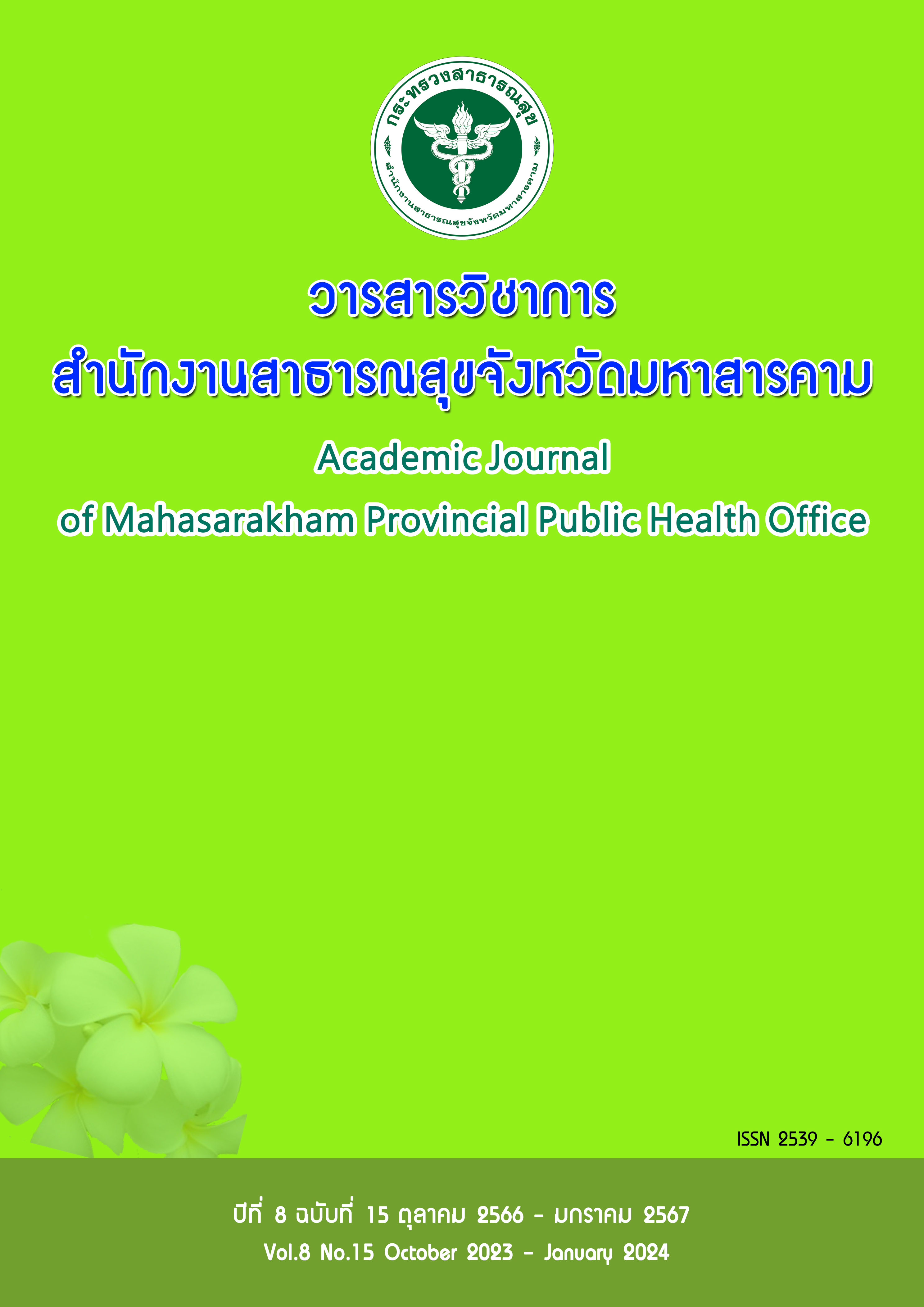Development of a Nursing Model for Infants and Children with Respiratory Distress Syndrome Using High-Flow Nasal cannula (HFNC) oxygen at Wapi Pathum Hospital
Abstract
Abstract
This research and development aimed to develop and assess the outcomes of a nursing model for infants and children with respiratory distress syndrome using High-Flow Nasal cannula (HFNC) oxygen in a pediatric ward, Wapi Pathum Hospital. The participants were selected by purposive sampling namely 1) Professional nurse at the pediatric ward 15 persons; 2) Infant and pediatric patients with respiratory distress syndrome who use High-Flow Nasal cannula (HFNC) oxygen. About 111 patients. They were divided into 2 groups, which the first group used the original model for 24 patients receiving high flow oxygen. The second group used the developed nursing model for 87 cases. Research instruments and data collection tools consisted of 1) qualitative tools such as participant observation form, focus group guideline questions, and informal interview questionnaires. 2) The quantitative instrument such as a data collection form for pediatric pneumonia patients receiving high flow oxygen therapy, Data form of Registered Nurses, Guide line Compliance Record Form, Nursing outcome record form, and satisfaction of registered nurses. Qualitatively analyzed data with content analysis. Quantitatively used descriptive statistics, frequency, percentage, mean, and standard deviation.
The results after using a nursing model found that the decline in ventilator requirement decreased from 8.33% to 3.45%. The number of days using high flow oxygen decreased from an average of 3.29 (SD±1.19) to 2.63 (SD±1.12) days. The average number of sleep days decreased from 4.63 (SD±1.43) to 4.32 (SD±1.63) days with statistical significance. The overall satisfaction scores were at the highest level. It was concluded that the developed nursing model for infants and children with respiratory distress syndrome using a High-Flow Nasal cannula (HFNC). Was appropriate for the context, and produced good nursing outcomes.
Keywords : Using the High flow nasal canula, Dyspnea, Nursing Model


